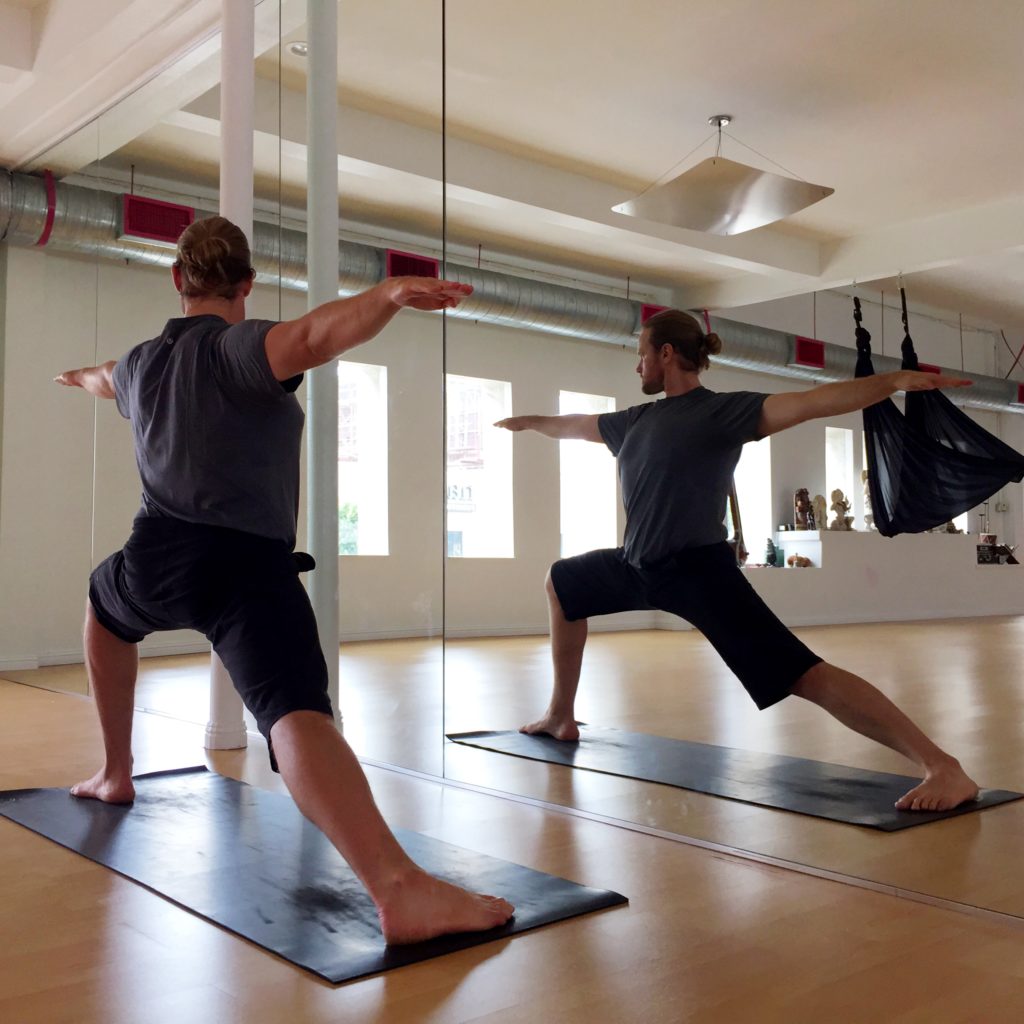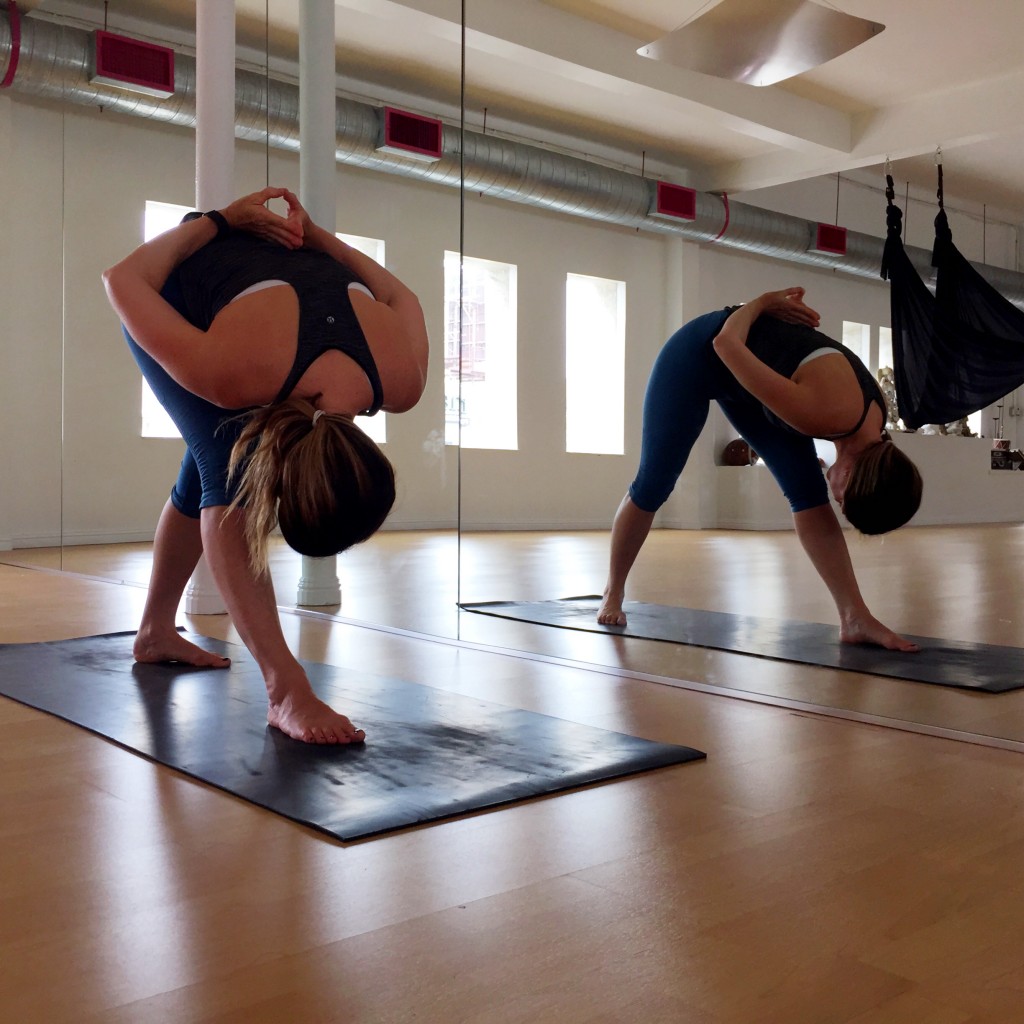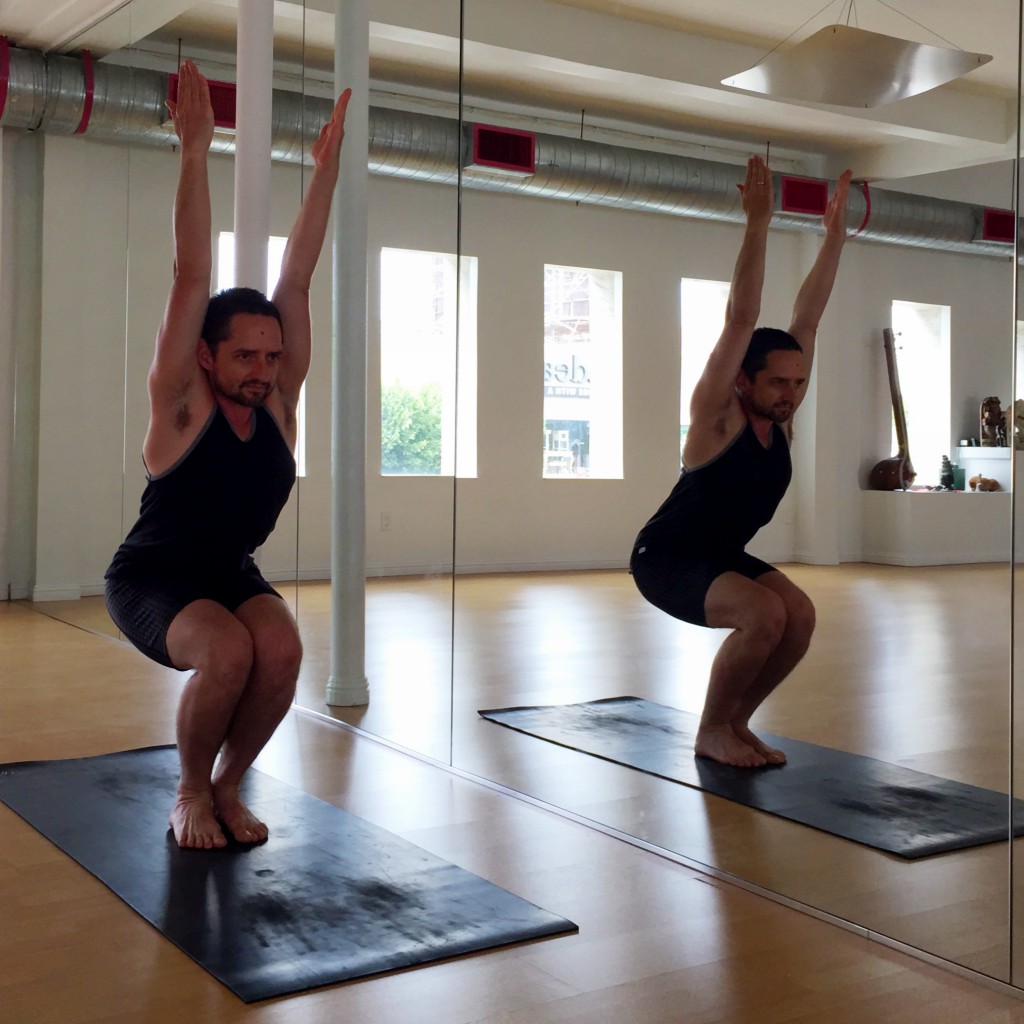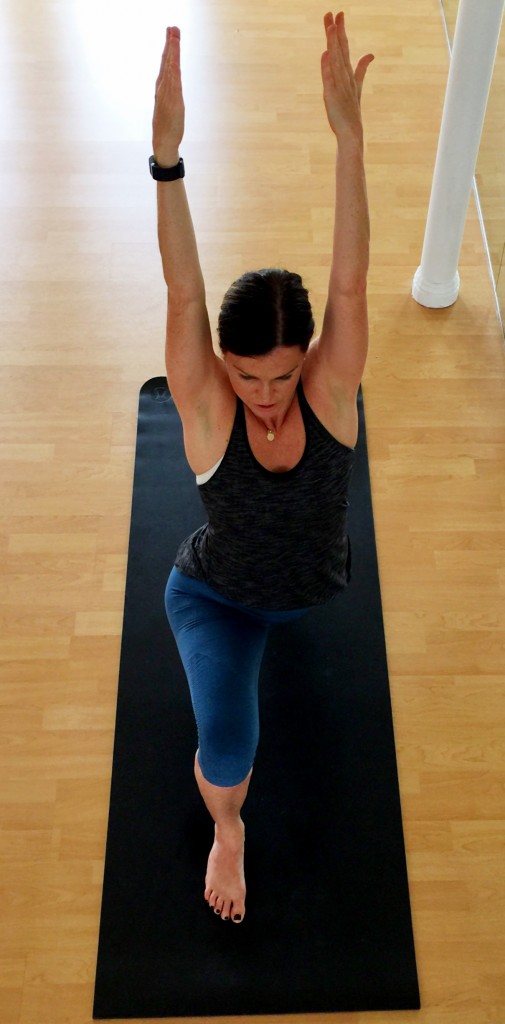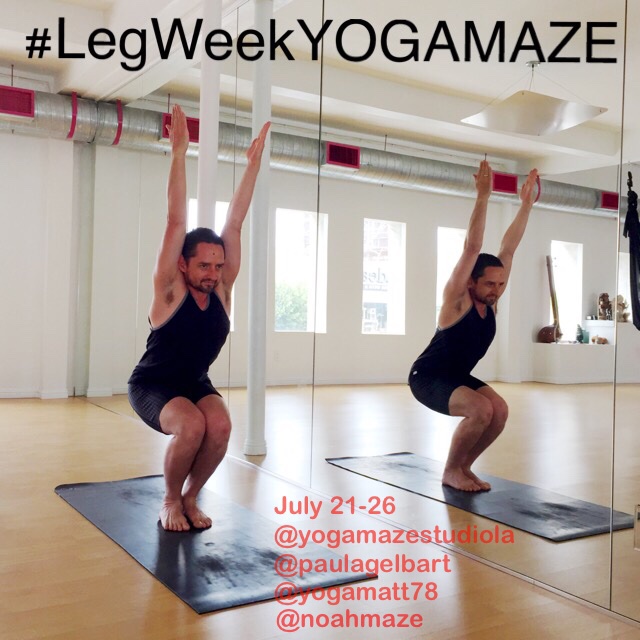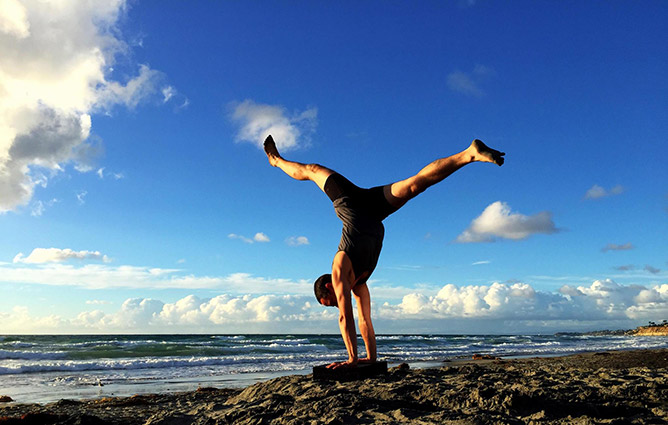Drawing Connections: Application of Yoga Based Knee Strengthening
This blog post is by The Mazé Method Emissary Dr. Paula Gelbart, DPT.
If you have a regular yoga practice, you know how yoga has benefited you. There is a growing amount of scientific evidence proving what many of us have experienced over the years, and some of the literature is yielding interesting results. It is helpful to look at some of this evidence to see what yoga typically can do for your body, and in some cases, what might be missing.
Some popular publications grab a research article and write their perspective on what the findings and results were. These publications are great at generating excitement over the research being conducted, however I’d like to go one step further and show you how to apply some of these findings to deepen your own practice and those of your students.
Over the coming months I will feature some current research being done related to yoga, and share how I apply some of that information within my own practice and for those I instruct or help in therapy.
The first article I am highlighting is “Identifying yoga-based knee strengthening exercises using the knee adduction moment” From the June 2015 issue of Clinical Biomechanics. The abstract can be found at http://www.sciencedirect.com/science/article/pii/S0268003315001710
Findings: Quadriceps activations were highest during squat and lunge postures.
Application: If you are looking to strengthen your quadricep muscles within the context of yoga, standing poses like Warrior 1 and 2, and utkatasana are a good starting point. Long sustained holds can yield benefits, but time each side to help create a balanced practice. Also, consider slow entry and exit strategies, and holding the posture with various amounts of knee flexion.
Finding: Hamstring activations were highest during the hamstring stretch.
Application: Several research articles points to the benefits of active stretching. This article highlights the activation of hamstrings being its highest when on stretch. Try starting with poses like Uttanasana, Paschimottanasana and Supta Padangusthasana to actively elongate your hamstring muscles. Active stretching, means exactly that – the muscle is contracting as it is lengthening. You can further add contract-relax techniques, described very eloquently by Dr. Ray Long in his books and on his blog.
Finding: Squat and lunge postures produced higher co-contraction indices than other postures.
Application: Poses like Warrior 1 & 2, and Utkatasana not only strengthen the quads, but also produce a higher co-contraction with the hamstrings. This lends to reduction of quad-dominance and better muscle balance around the knee when instructed properly and with optimal alignment. If you struggle with finding a co-contraction on the back of the leg try this tip: think of isometrically pulling your front heel down and back.Then straighten your front knee only a little bit, and focus on the contraction occurring with your hamstring on the back of your thigh. Then deepen the lunge and maintain more of the hamstring contraction. You can also try digging your fingers into the back of your thigh and make your hamstring contract under your fingers. This is a facilitation technique you can use throughout your body to help turn a muscle on.
Finding: Squats and lunges require greater lateral/medial co-contraction than other yoga postures
Application: This type of co-contraction can lend to increased stability around the knee the knee, minimizing adductor moments, overloading the medial compartment of the knee. Try isometrically feeling what abduction and adduction of the thigh feels like in a seated position, then apply that muscle activation into standing poses like Warrior 1, 2 and Utkatasana. For additional co-contractions, trying going into Utkatasana from Urdhva Hastasana with your heels lifted. Once you’ve squatted as deeply as you can, slowly plant your heels into the ground. This will engage your calf and pre-tibial muscles as well. A few mini pulses into the squat, emphasizing the pull down deeper will help engage the hamstrings more. Holding a block between the knees and isometrically trying to separate the feet from each other will engage some of your hip abductors. If you still can’t feel your hip abductors (your outer hips) engage, try placing a belt around your legs so your legs can remain hip distance apart. Press your legs into the strap isometrically and try to isometrically engage the inner thighs a bit as you sit into utkatasana. Co-contractions around the knee joint yield more perceived work on the yogi, and generate strength and stability for your knees to help you sustain a longer life-long practice.
I hope you enjoyed some of these tips and drills. Check back soon for more application of the literature into yoga and future Instagram challenges to help build awareness around making yoga accessible to everybody – all shapes, sizes and abilities.
Interested in learning more from us? Come studying with us online at: https://themazemethod.com/study-online-landing
Or sign up for one of our teacher training programs https://themazemethod.com/training-at-yogamaze . See a full listing of our programming at: https://themazemethod.com/schedule-maze-yoga
Interested in having me come to your studio? Send your inquiries to Tracy at info@noahmazeyoga.com or send a message to paula@inreach.com
You can find us on Facebook: Paula Gelbart, Noah Maze Yoga, Matthew Hill Yoga, Yogamaze Studio LA
IG: @paulagelbart @noahmaze @yogamazestudioLA @yogamatt78
twitter: @djgeekgirl @noahmazeyoga @The Mazé Methodstudio @hilmatthew
Leg Week Instagram Challenge: #LegWeekThe Mazé Method
Ready to apply some of this knowledge to your own practice? Join our 6 Day Studio Instagram challenge this week (July 21-26) focusing on leg facilitation and modification drills based on our latest blog posting. The challenge starts Tuesday July 21st and runs through Sunday July26th. Each day we will focus on a region in the leg to target. All anatomy, concepts and regions have been or will be featured during our #LegWeekThe Mazé Method daily features during the month of July. To see any of those features friend us on Facebook, Instagram or Twitter. Most of our teachers are participating, please friend all of them and tag all of us with your posting. We will show you how we build awareness, strengthen, modifications or target a specific region. We would like to see your interpretation, inspiration and creativity in this area! Our goal is to help build awareness that yoga is accessible to everybody – all shapes, sizes and abilities.
How to join our studio challenge:
- Repost the challenge photo and these instructions
- Follow your hosts @paulagelbart @noahmaze @yogamatt78 @yogamazestudioLA (While you’re at it follow all the @The Mazé MethodstudioLA teachers on Instagram)
- Check our postings each day and snap a photo or video of your interpretation of each day!
- Tag us your hosts and the studio and use the hashtag #LegWeekThe Mazé Method
- Challenge two friends to join by tagging them.
At the end of the challenge we will select winners for free class passes!
Dr. Paula Gelbart, DPT is a licensed and practicing Physical Therapist, and the owner of Align Physical Therapy in West Hollywood. Dr. Gelbart presents yoga and anatomy training programs around the world, and is currently apprenticing at The Mazé Method, and leading anatomy and yoga methodology workshops alongside Noah Mazé for The Mazé Method, worldwide. Dr. Gelbart received her doctoral degree in Physical Therapy from Mount St. Mary’s College, and has been rehabilitating human bodies for nearly 10 years. She holds various additional medical/therapeutic certifications, including in Neurac (Red Cord), CranialSacral Therapy, Pilates, Core Align, and Visceral Manipulation. Dr. Gelbart completed her undergraduate degree in Biology from the University of California Santa Barbara. In past years, she has served as a clinical coordinator at at a major los angeles conditioning center mentoring incoming physical therapy interns through their last rotations before graduation. Dr. Gelbart is also a former instructor of “Anatomy and Movement Fundamentals” for Pilates certification curriculum.
Dr. Gelbart currently serves as a contributor to The Mazé Method’s growing anatomy programs and curriculum. She received her 500 hour yoga certification through The Mazé Method under the direction of Noah Maze, and is registered with Yoga Alliance at the 500RYT level. She has extensively researched and studied yoga anatomy, spending time with teachers including Leslie Kaminoff, Martin Kirk, and Dr. Ray Long.
